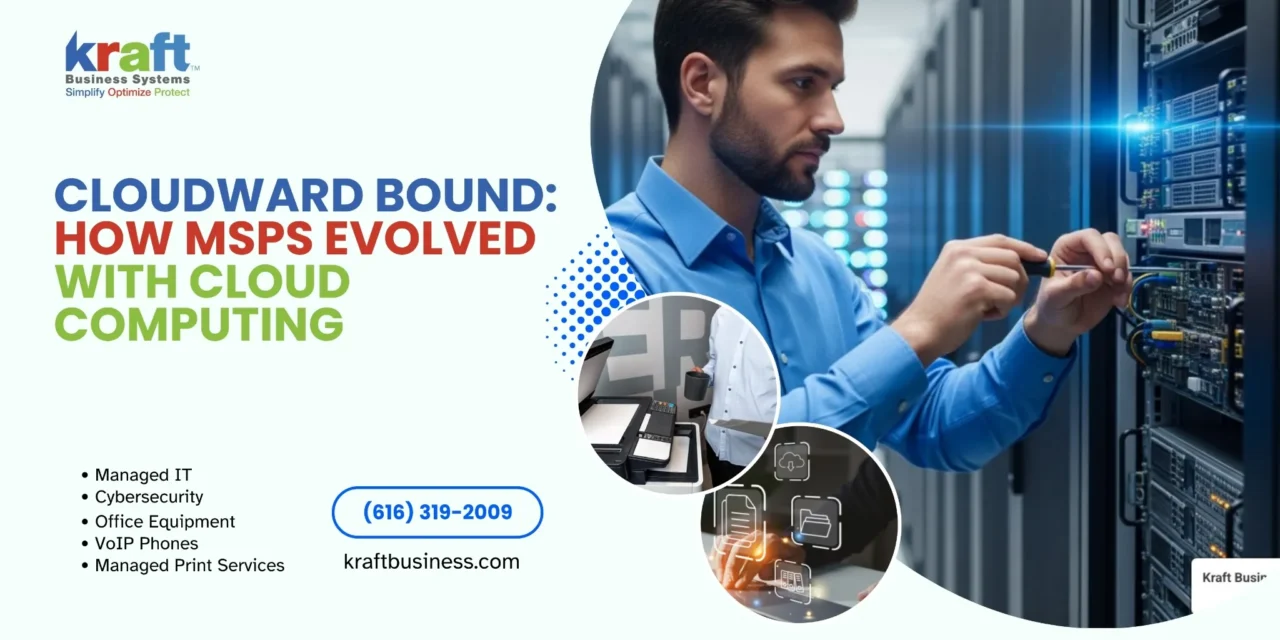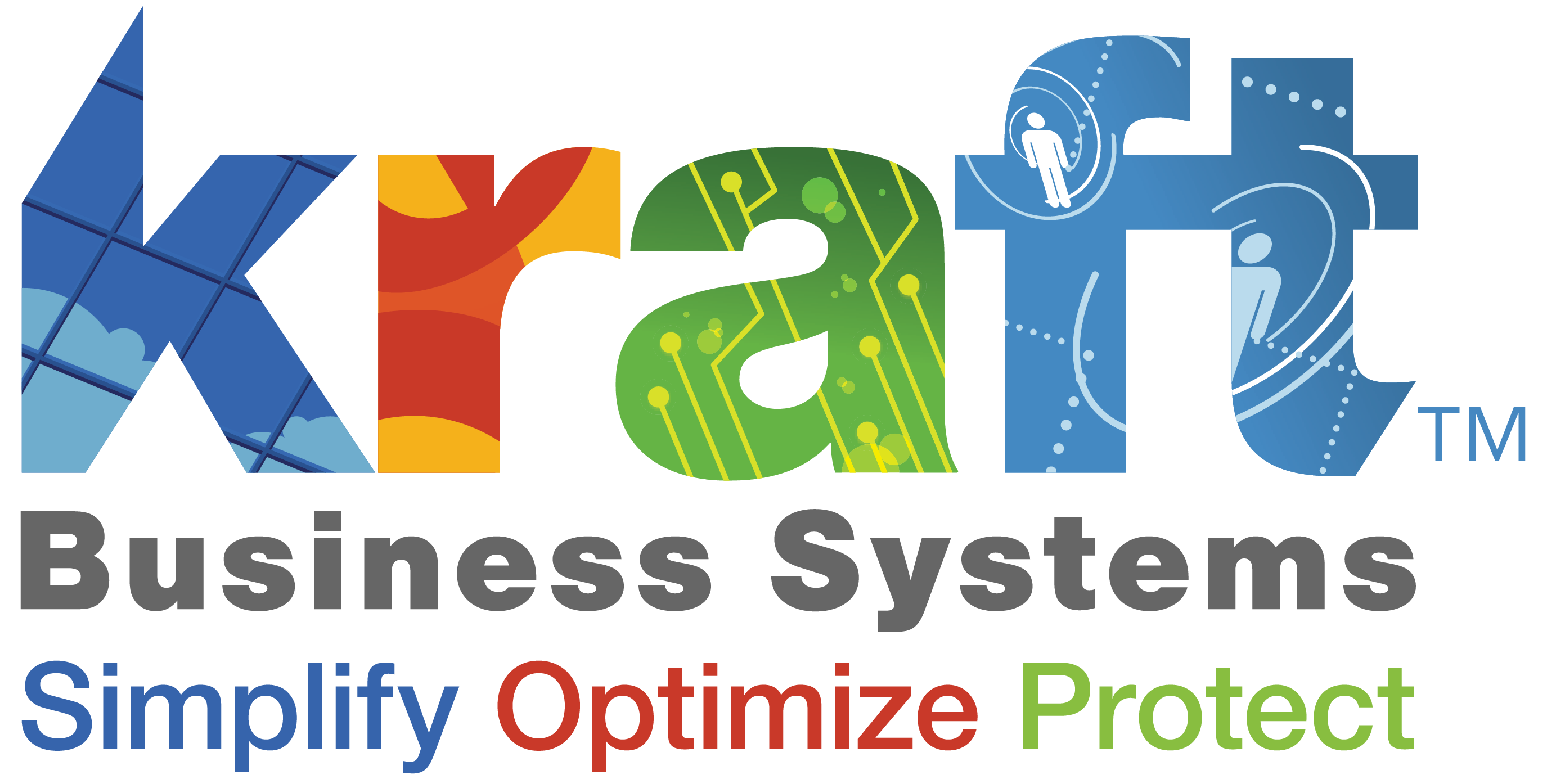The evolution from managed service providers msp to cloud computing marks one of the most significant shifts in the IT services industry. What began as simple break-fix support has transformed into strategic cloud partnerships that drive business growth. This journey progressed through key stages: from the reactive break-fix era of the 1990s, to proactive management with remote monitoring in the 2000s, followed by cloud integration in the 2010s, and finally to today’s strategic partnerships centered on AI and automation.
The initial shift occurred when businesses realized preventing problems was more cost-effective than waiting for systems to fail. However, the true catalysts for major change were rising cybersecurity threats that required specialized expertise, the scalability of cloud computing, and the demand for IT to align with strategic business goals.
Today’s cloud-focused MSPs act as strategic partners, leveraging public cloud resources from AWS, Azure, and Google Cloud to deliver fully managed services without the capital expense of traditional infrastructure. The managed services market has grown from $186 billion in 2019 to a projected $356 billion by 2025, largely driven by cloud adoption. This evolution required MSPs to rebuild business models and retrain teams, but those who succeeded now offer everything from cloud migration to AI-powered automation.
Key IT Shifts: How MSPs Are Transitioning to Cloud Computing
The Foundation: From Reactive Break-Fix to Proactive Management
Imagine your server crashing on a busy morning, bringing business to a standstill. You call an IT technician, who arrives hours later and hands you a large, unexpected bill. This was the break-fix model—the reactive way IT support worked before MSPs revolutionized the industry. It was like waiting for a car to break down on the highway before seeing a mechanic; seemingly cost-effective until disaster struck.
The Problem with the Break-Fix Model
The break-fix model was a minefield for businesses. Time-and-materials billing led to unpredictable costs, while downtime resulted in lost productivity and frustrated customers. The model’s misaligned incentives meant IT providers profited from problems, discouraging preventative action. With no strategic planning, this approach was inefficient and a serious liability for any business dependent on technology.
The Shift to Proactive Support
The evolution from managed service providers msp to cloud computing began with a simple idea: prevent problems instead of just fixing them. This transformed IT support into a strategic advantage.
Remote Monitoring and Management (RMM) tools were game-changers, allowing MSPs to watch client networks 24/7 and spot potential issues early. This shift introduced predictable costs through monthly recurring revenue (MRR) models, giving businesses budget clarity. System stability improved dramatically with proactive patch management and continuous network monitoring, resolving issues remotely before users were affected.
Service Level Agreements (SLAs) established accountability and clear expectations, building trust and ensuring business continuity. This foundational shift proved that technology could be a reliable partner, not an unpredictable expense. To learn more about how modern managed services work, check out What Are Managed IT Services? and explore The Evolution of MSPs for additional insights.
The Catalyst for Change: Cybersecurity and the Dawn of the Cloud
As MSPs settled into their proactive role, two powerful forces reshaped their world. The evolution from managed service providers msp to cloud computing was not just about new technology; it was driven by urgent business needs. The first was the explosion of cybersecurity threats, and the second was the rise of cloud computing. Together, they pushed MSPs to become strategic technology partners.
How Rising Cyber Threats Transformed the MSP Role
Simple IT worries gave way to sophisticated ransomware attacks that could cripple businesses. Small companies were especially vulnerable, lacking the resources for dedicated cybersecurity experts. This created an opportunity for MSPs to expand their services.
MSPs began managing complex security suites, from advanced firewall configuration to continuous anti-virus management. Data backup evolved from weekly tapes to cloud-based protection with instant recovery capabilities. As vulnerabilities were found almost daily, critical security patching became a core service, deployed without disrupting operations.
Many MSPs evolved into Managed Security Service Providers (MSSPs), making cybersecurity central to their value proposition. They went from fixing computers to protecting entire digital ecosystems. Our detailed exploration of Managed IT Services Cybersecurity Solutions shows how comprehensive these services have become.
The Early Impact of Cloud Computing on MSP Evolution
While MSPs battled cyber threats, cloud computing was building momentum. Instead of buying expensive servers, companies could rent computing power and applications on demand. Infrastructure as a Service (IaaS) and Software as a Service (SaaS) offered unprecedented flexibility and cost savings but also created complexity.
Hybrid environments became the norm, with over 75% of businesses using a mix of on-premise and cloud systems, according to Forrester Research. This complexity required expert management. MSPs had to retool their approach, shifting focus from physical hardware to virtualization, bandwidth services, and cloud-based disaster recovery.
The evolution from managed service providers msp to cloud computing accelerated as businesses sought guides for this new digital landscape. MSPs who made this transition found themselves managing not just IT systems, but entire digital changes. Understanding Cloud Security for Businesses became essential as the Role of MSPs in IT Security expanded to protect both on-premise and cloud assets.
Key IT Shifts: How MSPs Are Transitioning to Cloud Computing
The Great Migration: The Evolution from Managed Service Providers (MSP) to Cloud Computing
The arrival of public cloud platforms like Amazon Web Services (AWS), Microsoft Azure, and Google Cloud Platform (GCP) changed everything. They reimagined how businesses access and use IT resources. For MSPs, this was a fundamental shift requiring a complete reinvention of their business models and client services.
The evolution from managed service providers msp to cloud computing represented the most significant change since the move from break-fix to proactive support.
Leveraging Public Cloud for Fully Managed Services
Traditionally, adding a server involved significant capital expenditure (CapEx)—huge upfront costs for hardware that would eventually become obsolete. Cloud computing flipped this to an operational expenditure (OpEx) model, allowing businesses to rent computing power and pay only for what they used.
MSPs realized they could now offer fully managed services without maintaining physical hardware. Cloud migration services became a highly valuable offering, as moving applications and data to the cloud required specialized skills most businesses lacked. Once in the cloud, MSPs managed flexible virtual infrastructure, adjusting resources on the fly.
MSPs also became crucial for cost optimization. The cloud’s flexibility made it easy to overspend, so MSPs developed expertise in FinOps (Financial Operations) to help clients monitor spending and identify savings. This created a skills gap, as managing cloud environments required specialized knowledge that MSPs had to acquire through heavy investment in training and certification. This transition is detailed in Cloud Adoption Strategies for MSPs.
Building New Recurring Revenue Streams in the Cloud
The cloud’s subscription model aligned perfectly with the MSP’s monthly recurring revenue approach, creating opportunities for more valuable and “stickier” services. Key new revenue streams included:
- Cloud Monitoring and Management: Providing 24/7 oversight of cloud resources to ensure performance and reliability.
- Managed Backup and Disaster Recovery: Implementing robust, automated cloud-based backup solutions across multiple geographic regions.
- Cloud Security Management: Addressing the client’s side of the shared responsibility model by securing data and applications in the cloud.
- Managed DevOps and Consulting: Helping businesses implement modern development pipelines and providing ongoing optimization advice.
Research shows that 97% of businesses will pay more for providers who deliver quality cloud results. The Next-Generation Cloud Managed Services: A Full Lifecycle Support Engagement | Amazon Web Services program exemplifies this comprehensive approach. The evolution from managed service providers msp to cloud computing was about becoming strategic partners who could guide businesses through a major technological shift. Learn more in Cloud Integration Strategies for MSP.
Key IT Shifts: How MSPs Are Transitioning to Cloud Computing
The Modern MSP: A Strategic Partner in the Cloud-First Era
The evolution from managed service providers msp to cloud computing has transformed MSPs from IT fixers into strategic business partners. If the old MSP was a mechanic, the modern MSP is a transportation consultant planning the entire journey. This shift means businesses now see MSPs as essential allies in their digital change, focusing on driving growth through technology.
From Reactive Support to Strategic Business Alignment
Modern businesses need partners who align technology with their objectives. The focus has shifted from cost savings to achieving business outcomes like agility and innovation. IT planning and consulting are now core services, with MSPs helping develop technology roadmaps that support a long-term vision.
Many MSPs establish a Cloud Center of Excellence (CCoE) to implement best practices. They also leverage predictive analytics and automation to anticipate issues and enable self-healing systems, drastically reducing downtime. By managing the complexity of hybrid, multi-cloud environments, MSPs allow businesses to focus on their core operations. This strategic involvement is explored in Cloud Computing in Business Operations.
Key Benefits of Partnering with a Cloud-Focused MSP
The advantages of working with a modern, cloud-focused MSP are substantial, touching every aspect of business operations.
| Feature | Traditional MSP Services | Modern Cloud MSP Services |
|---|---|---|
| Focus | Reactive support, break-fix, on-premise hardware management | Proactive, strategic partnership, cloud infrastructure, business outcomes |
| Cost Model | Unpredictable (break-fix), some fixed-fee for on-prem | Predictable monthly fees, OpEx for cloud resources, cost optimization (FinOps) |
| Scalability | Limited by physical hardware, slow to scale up/down | Highly elastic, scales on-demand with cloud resources, global reach |
| Expertise | General IT support, hardware/network troubleshooting | Deep specialization in cloud platforms (AWS, Azure, GCP), cybersecurity, DevOps, AI |
| Security | Basic anti-virus, firewall, reactive incident response | Comprehensive cloud security, continuous compliance, threat detection, advanced solutions |
| Innovation | Less emphasis, focused on stability | Drives digital change, leverages AI/automation, enables faster time to market |
Partnering with a cloud MSP delivers predictable cost efficiency, improved scalability and agility, and access to specialized expertise that is difficult to maintain in-house. This is crucial as 88% of enterprises use multiple cloud providers. Businesses also gain improved security and compliance and a faster time to market, providing a significant competitive edge.
The transition has not been without problems. The shared responsibility model in the cloud creates complexity, requiring clear lines of responsibility for securing data and applications. Managing multi-cloud complexity demands deep expertise across different platforms. MSPs themselves face skills gaps and must invest in continuous training to keep up with new technologies.
Adapting business models and staying competitive in a crowded market remain ongoing challenges. The pressure to innovate is constant, as many clients are willing to switch providers for better service. Despite these issues, successful MSPs emerge as trusted advisors who help clients modernize and build sustainable advantages. Learn more about How to transform your existing MSP and be more competitive.
Future Horizons: Emerging Trends Shaping the Next Generation of MSPs
The evolution from managed service providers msp to cloud computing is not over. The IT landscape continues to shift, driven by new technologies and business needs. The next generation of MSPs will be defined by hyper-specialization, deep integration of cutting-edge technologies, and a commitment to sustainable practices. Staying ahead requires leading the charge, not just keeping up.
The Impact of AI and Hyperautomation
Artificial Intelligence and automation are the backbone of next-gen managed services. MSPs are using these tools to create predictive and self-healing IT environments. AI-powered predictive maintenance can forecast system failures, allowing for intervention before business is impacted. Automated security responses can identify and counter threats in milliseconds, a critical advantage against sophisticated cyber attacks.
Automation also improves efficiency, freeing up human experts for strategic work. This opens doors to new services like prompt engineering, which helps businesses optimize their AI applications. With global IT spending projected to reach $5 trillion in 2024, MSPs who integrate AI and automation are well-positioned for growth.
The Rise of Specialization and Sustainability
As IT complexity grows, the jack-of-all-trades approach is yielding to deep specialization. MSPs are developing industry-specific solutions for sectors like healthcare and finance, addressing unique regulatory and operational needs. Niche expertise in areas like Kubernetes or compliance-as-a-service allows MSPs to provide greater value.
Sustainability has become a business imperative. MSPs are adopting Green IT practices, such as optimizing cloud resources to reduce carbon footprints and advising clients on sustainable technology. With 83% of businesses stating that provider sustainability is critical, this focus is key to meeting client expectations. The managed services market is projected to exceed $511 billion by 2029, according to a recent report by MarketsandMarkets. MSPs that accept these trends will lead the next wave of innovation.
Conclusion
The journey of Managed Service Providers has been remarkable. The evolution from managed service providers msp to cloud computing has transformed simple break-fix support into sophisticated, strategic partnerships that fundamentally change how businesses use technology.
We’ve moved from reactive fixes to proactive prevention, from managing server rooms to orchestrating complex cloud environments. The role has shifted from a technical vendor to a trusted advisor who helps shape business strategy. This change was driven by the need for predictable costs, scalability, specialized expertise, and robust security.
The managed services market is projected to reach $511 billion by 2029, reflecting the value businesses have found in strategic IT partnerships. When managed correctly, technology is not just an expense—it’s a competitive advantage.
At Kraft Business Systems, we have lived this evolution alongside our clients. Serving businesses across Michigan, from Grand Rapids to Detroit, our team of consultants and industry experts partners with you to ensure your technology investments drive real business value. We help companies of all sizes reinvent themselves for the digital age.
The future promises more innovation, with sustainability, industry-specific solutions, and AI-powered automation leading the way. What remains constant is the need for a trusted partner who understands your business goals. The IT landscape will keep changing, but having an expert in your corner is what matters.
That’s where we come in. We aren’t just keeping up with the evolution from managed service providers msp to cloud computing—we’re helping to shape it. We are here to help you steer what comes next.











